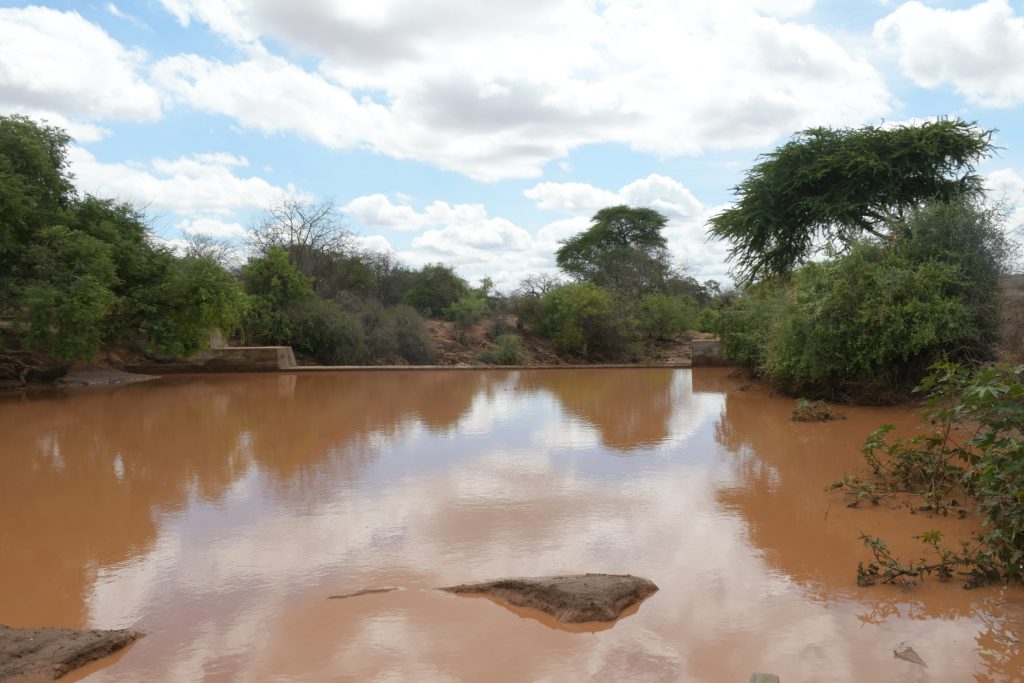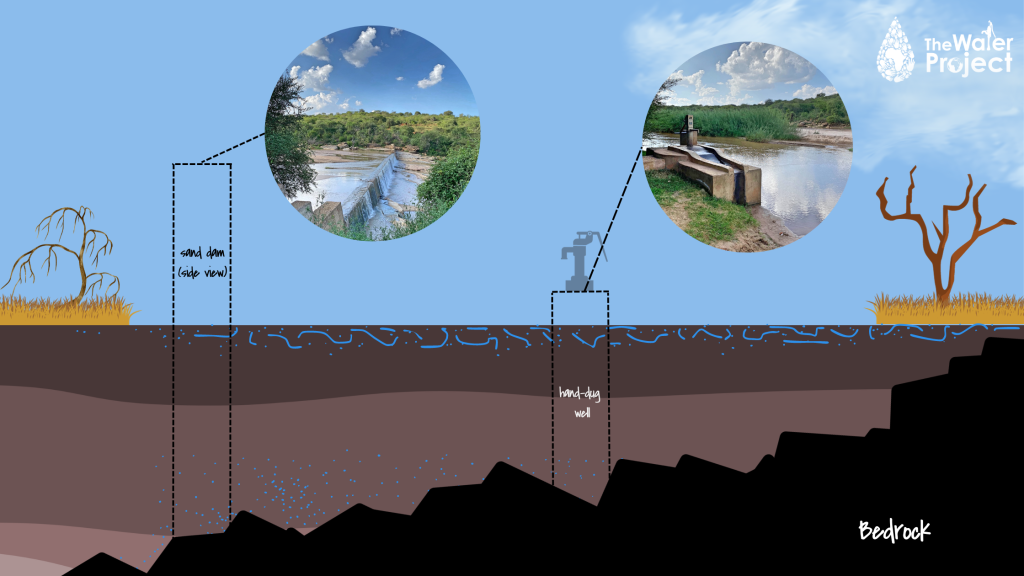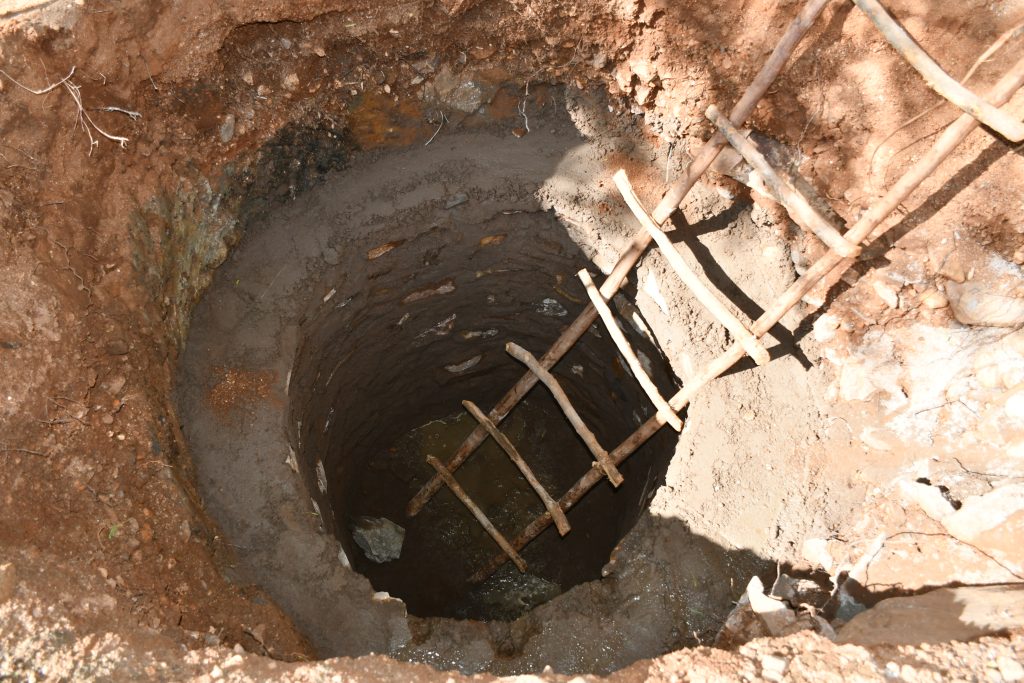Even in the Modern Era, Hand-Dug Wells Can Still Be the Best Choice
Nowadays, a quick Google search will tell you that hand-dug wells are reserved for homesteaders and historical reenactors — but that’s in the industrialized world. In sub-Saharan Africa, where people are often left to find their own water, it’s a totally different story.
Hand-dug wells are still an important household source where water is not equitably distributed amongst the population, and where environmental conditions make water scarce. People in sub-Saharan Africa often dig their own wells. In fact, our recent water point mapping studies showed that hand-dug wells make up 55% of the water sources used in our focus region of Western Kenya and 87% of the sources in Sierra Leone.
But these hand-dug wells aren’t perfect solutions, as you can imagine. Hand-dug wells are more prone to seasonal dryness than boreholes, as they aren’t deep enough to access aquifers. Their water quality can also be poor, as there are fewer ground layers to filter out sources of contamination like bacteria, parasites, refuse, and human/animal waste.
In a dry region like our Southeast Kenya service area, there is often little or no water to access underground. Instead, we use techniques to retain rain during the wet season so that it lasts throughout the long dry season. One good way we’ve found to do this is through the construction of sand dams in seasonal riverbeds.
Sand dams work by allowing sand to build up behind the dam. The sand holds on to a tiny percentage of the river water while letting the rest flow over the shortest part of the dam undeterred. We’ve written a bunch about sand dams if you’re curious to learn more about how they work.

The key thing to know is that sand dams hold water near the surface of the Earth. So, a borehole well, which is drilled through many layers of ground beneath our feet, wouldn’t work well next to a sand dam. We need something shallower to meet the water where it is.
Communications Officer Titus Mbithi, who works in our Southeast Kenya service area, explained why hand-dug wells are the best option for a water source next to a sand dam.
“Mature sand dams…allow water to infiltrate through sand layers to the shallow well with ease, thus assuring the community of all-year-round clean water supply,” Titus said. “Having shallow wells next to sand dams is advantageous as it enables quick water recharge rates, providing water to communities even during the dry parts of the year.”
Hence, we have the hand-dug well! A humble, historical holdover, some would say. But when speaking with the people who dig wells by hand, it becomes clear that even though humans have dug wells by hand for many thousands of years, the techniques we use to ensure efficiency, stability, and safety have come a long way.
Digging a 21st-century hand-dug well
For hand-dug wells, the aim is always to dig down until we reach the hard bedrock beneath the layers of soil, sand, and clay. That way, not only is the foundation of the well stable, but the well is better positioned to catch water that flows downstream and into a sand dam’s reservoir — which will also be strategically positioned right on top of the neighboring bedrock. The upstream side will fill with sand and retain water to feed the new well.

Even if hand-dug wells are the best logistical choice, we often get questions from people about whether digging wells by hand is safe.
“Most of the shallow wells are excavated on [a] firm soil formation and are dug up to the bedrock level,” Titus said. “In very rare sites where we have soft ground, we have safety measures such as widening the circumference of the hole to allow the soil to rest in a way that it cannot collapse. In rare cases, we will need to use timber as formwork to prevent the soil from collapsing during construction.”
When the soil is firm, the construction artisans may be able to more or less dig straight down, as in this well here.

But if the ground is soft, they employ a more graduated approach, digging in stages, to discover where the firm bedrock ends and the soil begins. Then, once the well is constructed, the artisans will pack the soil all around the circumference of the new well to stabilize the structure.
But isn’t the water from a hand-dug well unsafe?
Well, sometimes. But not in this case.
Many hand-dug wells provide unsafe water — especially when they’re built near latrines, garbage pits, places where people bathe or do laundry, etc. Someone looking to drink water from a hand-dug well should survey the well’s environment to determine whether the water might be safe…but even then, the environment may not tell the full story.
Because hand-dug wells aren’t as deep, there aren’t as many layers of ground present to filter out possible water contaminants. For our hand-dug wells, the sand dams filter the water in the same way those layers of ground might.
Depending on the size of the sand dam, the types of soil, and the geology of the surrounding riverbed, a sand dam’s water may permeate deep into the surrounding ground. This is why we currently only dig hand-dug wells adjacent to sand dams — the sand dam serves to filter the water as well as retain it.
“A sand dam mitigates the seasonality of hand-dug wells by recharging the ground with water, and the water quality concerns of hand-dug wells by acting as an enormous filter,” said The Water Project Program Manager Emma Kelly. “The dam both requires and improves upon a shallow, hand-dug well.”
As a sand dam matures, the layers of sand that form beside its wall become denser and denser the deeper you go. This means that once the water enters a well at the base, it has already gone through several rounds of natural filtration.
We also install a non-permeable lining within the well to prevent water from entering the structure above a certain point (usually two meters belowground). Sourcing the water from deep down where the sand is densest further prevents any surface-level contaminations from finding their way into the drinking water supply.
“A hand-dug well has good protection of water from contaminants, making it safe for use by the community members,” Titus said.
So, in the right circumstances, and even with all the modern technology on offer throughout the world, a hand-dug well is still the best source of water for Southeast Kenya.
If you’d like to fund one of our upcoming sand dam or hand-dug well projects, pick a “dug well with hand pump” project from our list of impact opportunities. There are people in Southeast Kenya waiting on your help to start living a life with a nearby water source.
If you’re curious about sand dams, hand-dug wells, or any other program-related questions, feel free to ask us! We’re always happy to answer questions.
Home More Like ThisTweet